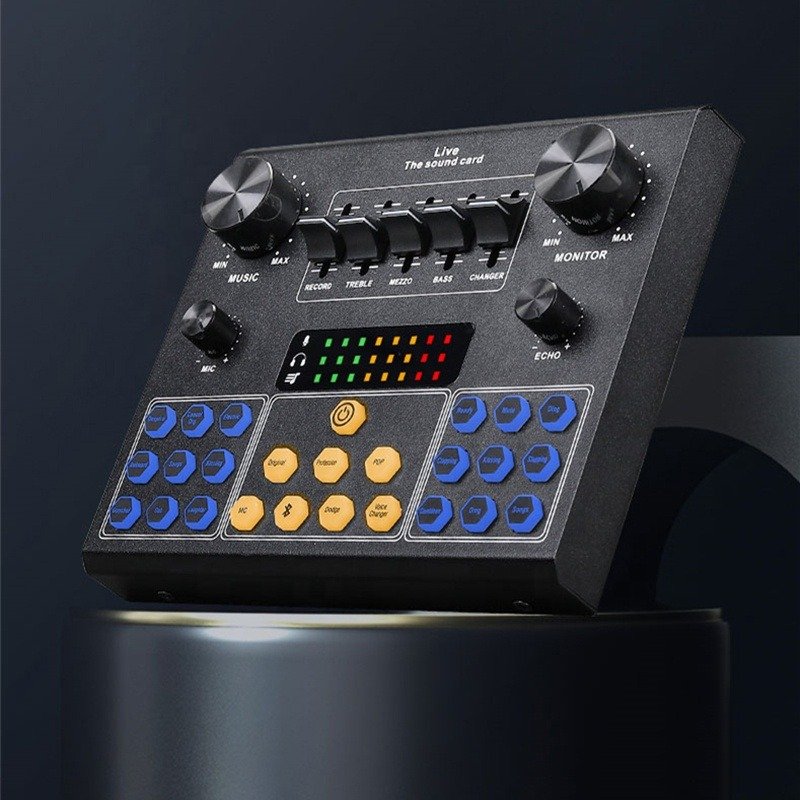
In today’s digital age, live streaming has become an essential tool for artists, broadcasters, and content creators. A live sound card plays a pivotal role in enhancing the audio quality of these streams. Whether you’re a beginner or a seasoned professional, understanding how to use a live sound card effectively can significantly improve your audio output. This guide will walk you through the basics of setting up and utilizing a live sound card to get the best results.
What Is a Live Sound Card?
A live sound card is a device that combines multiple functionalities, such as recording, broadcasting, live streaming, and karaoke, into one compact unit. It is equipped with features like live effects, electronic music effects, sound field settings, and voice change capabilities. These features are designed to improve the overall audio quality of your live performances or recordings.
Key Components of a Live Sound Card
Before diving into the setup and usage, let’s break down the essential components of a typical live sound card:
1. Effects and Modes
Most live sound cards come with a variety of effects, such as:
- Live Effects: Enhancements like reverb, delay, and chorus that can add depth to your vocals.
- Electronic Music Effects: Effects like distortion, flanger, and phaser that are ideal for DJs and electronic musicians.
- Sound Field Effects: Settings that simulate different acoustic environments, such as concert halls or studios.
- Voice Change: Options to alter your voice for fun or creative purposes.
2. Connectivity
- Bluetooth: Allows wireless connection to devices for music playback or backing tracks.
- Inputs and Outputs: Connections for microphones, instruments, headphones, and speakers.
- USB: For linking to computers or charging the device if it’s battery-powered.
3. Control Interface
- Rotary Knobs: Typically found for adjusting levels of music, monitor, echo, and microphone.
- Buttons: For selecting effects, changing modes, and controlling the device’s functions.
- Display Screen: Provides visual feedback on settings and status.
Setting Up Your Live Sound Card
Step 1: Connect Your Devices
First, connect your microphone, instruments, and any other audio sources to the appropriate inputs on the live sound card. Ensure that all cables are securely connected and that the device is powered on.
Step 2: Pair with Bluetooth Devices (If Applicable)
If your sound card supports Bluetooth, pair it with your smartphone or tablet to stream music wirelessly. This is particularly useful for playing backing tracks during live performances.
Step 3: Adjust Levels and Effects
Using the rotary knobs, adjust the levels of your microphone, music, and echo until you achieve a balanced mix. Experiment with the different effects modes to find the perfect sound for your performance.
Step 4: Connect to Your Streaming Platform
Plug the sound card into your computer via USB if you plan to live stream. Most modern live sound cards support plug-and-play functionality, making setup quick and easy. Once connected, select the sound card as your input device in your streaming software.
Tips for Getting the Best Results
- Monitor Your Sound: Use headphones or a monitor speaker to listen to your mix in real-time. This helps you fine-tune your levels and effects on the fly.
- Use One-Key Evasion: This feature allows you to quickly adjust the volume of your microphone and monitor. It’s especially useful when you need to make rapid changes during a live broadcast.
- Experiment with Multiple Microphones: If your sound card supports dual inputs, try using two microphones for different sound sources or for stereo recording.
- Maintain Your Equipment: Keep your sound card clean and protected. Regular maintenance ensures that it continues to perform at its best.
Enhancing Your Live Streams with a Quality Sound Card
Investing in a high-quality live sound card can make a significant difference in the audio quality of your streams. For instance, a well-equipped live sound card such as this model can offer advanced features like 12 live effects, 12 electronic music effects, and 4 sound field settings, making it a versatile tool for any live streaming setup.
Conclusion
Mastering the use of a live sound card can transform your audio production, whether you’re streaming, recording, or performing live. By following these steps and tips, you’ll be able to set up and utilize your sound card to its full potential, delivering crisp, clear, and engaging audio to your audience.
